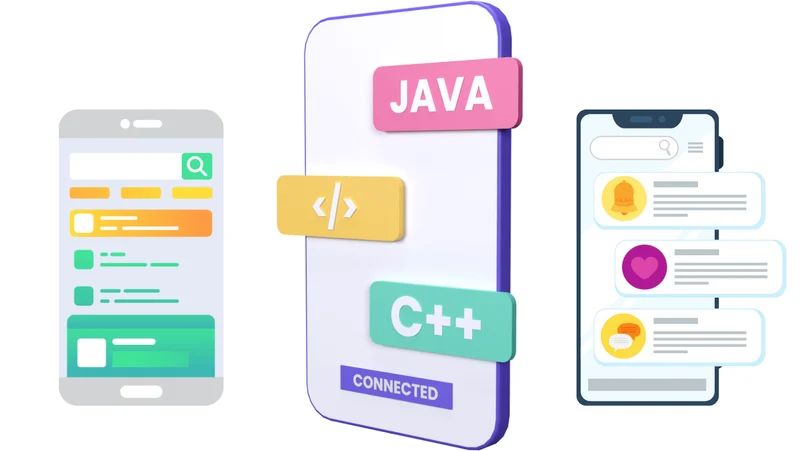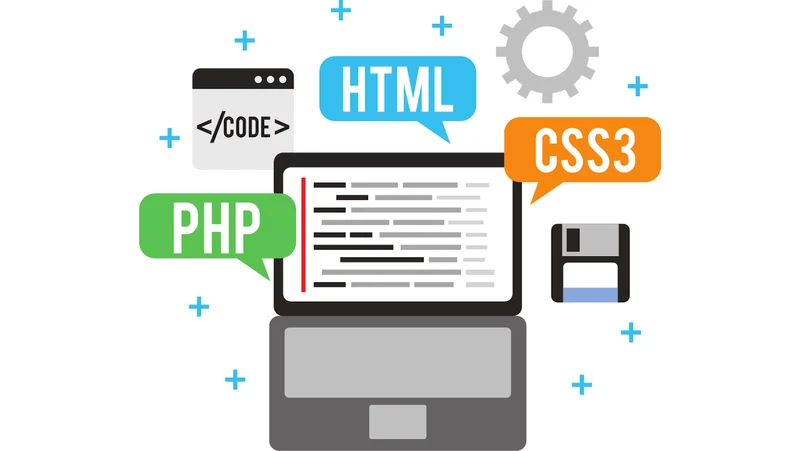The Best Technology for Mobile App Development
According to Data.ai’s State of Mobile 2022, users spent an average of 4.8 hours on Android phones, while spending $170 billion on app stores (including iOS, Google Play, and Third-Party Android in China). Microsoft, Meta, Google, and other market leaders, are already racing towards the future of mobile engineering to provide their customers with mobile experiences that surpass today's reality.
To stay relevant and compete in this lucrative market, new businesses need to build mobile applications using the latest technology.
Before you jump to hiring a mobile app developer, it's important to understand and choose the best technology for mobile app development. In this article, we guide you with various mobile dev technologies to help you to make informed choices.
Before choosing the best technology for mobile app development, it's critical to answer this simple question: What type of mobile app do you want to build?

Native Apps
Native apps are compatible with a specific mobile operating system (OS) – like Android or iOS. Due to their specificity, you cannot use an Android app on an iOS device or vice-versa.
Pros: native apps are faster, more secure, and more predictable in terms of UX performance than hybrid or web apps. Consumers get a superior user experience as native apps can access mobile device features for building interactive design. Since it's native, it results in fewer bugs during development.
Cons: native apps require custom code across various OS to digitally distribute your mobile app business. Accordingly, you need to hire multiple software engineers to develop and maintain these apps. This increases overall product development cost. Hybrid apps, on the other hand, can cost at least 30% less than native apps.
Popular Frameworks for Native Mobile App Development
Swift
Developed by Apple Inc, Swift is an open-source compiled programming language for building apps across the Apple device ecosystem. You can avoid developing from scratch using this curated list of the best Swift frameworks available on GitHub. Due to its conciseness and simplicity, it's easier to onboard developers to scale teams. You can also use it interchangeably with Objective-C within the same project. Start learning Swift from their resources section which includes tutorials, documentation, and their Swift Playgrounds tool for building practice.
Android
Android is the most adopted platform by mobile manufacturers for their OS. Android apps use Java as their official language for development. For faster development and writing concise codes, you can learn Kotlin. It is used by 60% of Android developers to improve their productivity. You can use Android Studio – its official Integrated Development Environment for developing apps. Frameworks like RenderScript and Native Development Kit help you quickly get started.
Web Applications
Web apps are responsive versions of websites. Unlike native apps, they are delivered via the mobile browser. Hence, these apps can work on any OS or mobile device.
Pros: You can make users simply ‘bookmark’ the website page on their mobile devices to distribute your app. Since they don’t need installs or updates, they hardly take storage space. With shorter development times, web apps are a cost-effective alternative to native or hybrid apps.
Cons: Your app’s capabilities depend on the browser’s features where they are opened. Offline access is also an issue, as it needs an internet connection to update data. It is also less secure compared to native apps.
Popular Frameworks for Web App Development
The backend (server-side) of a web app is just as important as the frontend (client-side). Here are popular frameworks for both that you can explore. Let’s explore first the backend development frameworks:
Express
From Uber to Accenture, Express has become a preferred backend framework with the rise of Node.js. Its flexibility and compatibility with Loop, Sails, and Kraken among others also improve its usability. Among all Node.js frameworks, it's the most supported with an open-source community.
Get quickly started with this list of Express.js resources shared on GitHub.
Django
Django is a security-first Model-View-Template framework. Instagram, Google, YouTube, and other tech giants have adopted this framework. It uses python to enable the building of secure web applications via its authentication and messaging features. Get started with Django from their documentation and resources.
Other useful backend web application frameworks to explore include Laravel, Spring, and Ruby on Rails. Some frontend development frameworks that you can explore to build web applications include:
Angular
Developed by Google, Angular is a popular front-end framework that uses Typescript, HTML, and CSS. Its popular use case is for developing single-page applications. Tech companies like Paypal, Upwork, The Guardian, and Microsoft among others have adopted Angular. Explore the resources section of their website to learn Angular.
React
Developed by Meta, React is an open-source front-end library that can be used for both client-side and server-side. Its component-based logic and declarative views enable the development of interactive UIs. Brands like Adobe, Airbnb, and Algolia, among others, have adopted React. The React community has curated React.js learning resources to help you get started. Other best and most useful front-end web application frameworks include Vue, Ember, Backbone, and Bootstrap among others.
Hybrid Apps
Hybrid apps behave, feel, and look like native apps. Though in reality, they are just a mix of web app technologies and native APIs. Typically, hybrid apps are written using HTML, Javascript, and CSS.
Pros: Hybrid apps have faster build cycles. They are cheaper to develop and maintain compared to native apps. You can release hybrid apps across web, Android, and iOS devices, making it a popular choice for developing Minimum Viable Products for feedback.
Cons: Hybrid apps can be slow, resulting in a bad user experience. Unlike native apps, they cannot fully benefit from mobile device hardware features. The app’s user interface and overall experience may also vary as per the mobile device.
Popular Frameworks for Hybrid Mobile App Development:
Ionic
Ionic is an open-source framework built using Apache Cordova and Angular. Its intuitive UI components, quick deployment, and strong community support make it a great technology choice. Brands like Southwest Airlines, Airbus, and National Health Service among others use ionic.
Get started with ionic with their curated learning resources.
React Native
Developed by Meta, React Native is a popular JavaScript-based framework. With live reload and multiple 3rd party libraries support, you can design a single code base app for iOS and Android devices. Companies like Facebook Ads Manager, Xbox Game Pass, and Discord among others use React Native.
Learn more from this curated list of React Native resources.
Flutter
Developed by Google, Flutter is an open-source SDK for mobile dev. Its built-in material UI design, rendering engine, and the best widget support by Google, enable faster app launch to market. Brands like Dream11, Alibaba, and BMW among others use Flutter. Get started with this list of Flutter resources.
Why is it Important to Choose the Best Technology for Mobile App Development?

“The biggest mistake we’ve made as a company is betting on HTML5 over native,” said Mark Zuckerberg, CEO of Meta, at the TechCrunch Disrupt conference in San Francisco back in 2012. The use of hybrid apps slowed their mobile app user experience, but despite the slow performance, it also enabled them to easily update apps across platforms, giving them a good release speed.
Hence, it's important to have clarity of your product use case to adopt the right technology. Consider the business bandwidth in terms of capital available and developer talent hired. Use insights from market data analysis to ensure you’re up to date with the choice of mobile dev technology.
You should also take care about the technology chosen versus your target customer’s behavior when they interact with mobile devices. Undertaking these measures ensures you develop mobile apps that are aligned with the user’s expectations and needs. You can read more about the pros and cons of mobile app development to make an informed choice of adopting mobile dev.
Once you fix your mobile dev technology, you can start looking for relevant talent to help you build your product. Explore and implement the best practices for hiring a mobile developer with our Mobile Development Resources section.
FAQs:
Q1: Which programming language is best for mobile app development?
Java is best for Android apps, while Swift or Objective-C are best suited for iOS apps. Overall, your choice of programming languages — and the best technology for mobile app development — depends on how much time you have until the launch of your product. It's faster to deploy responsive web applications, followed by hybrid. Native apps require the most time for development.
However, compared to hybrid and web, native apps are more stable due to better compatibility with mobile devices. Native apps can be tailored to specific mobile platforms to deliver the greatest mobile app performance to users. Despite the advantages of native apps, they do require the greatest amount of resources to build, since they require investing in experienced engineers with skills across programming languages, while hybrid apps use a single code base to launch MVP quickly across iOS, Android, and the web.
Q2: What are most apps built in?
Of the top 50 retail apps across the app marketplaces, about 74% are built using hybrid mobile dev technologies, according to Forbes. Combinations of Javascript, HTML, and CSS are the most popular used for developing web applications. Kotlin, Java, Python, and Rust also rank in the top 10 most preferred programming languages in 2022.
Q3: How does an app make money?
A common way to monetize your mobile applications includes in-app purchases which are typically used by eCommerce apps. Upselling app users with products or services delivered via your app is another common practice. With in-app advertising, advertisers pay based on how mobile app users interact with the placed ads in your app.
If you have a loyal user base, you can opt for a subscription-based model, where you make your app’s content or features available when your users subscribe for a periodic fee. Another common way to monetize your app is using affiliate marketing, placing product purchase links that your users may find useful for buying, and earning commissions as a percentage of the product price.
